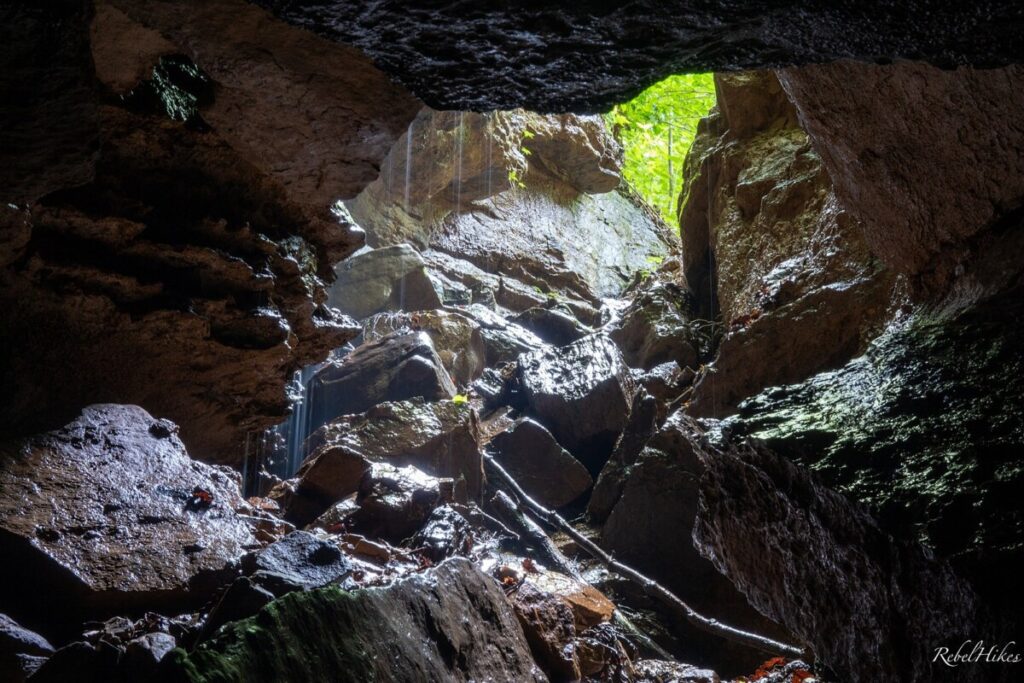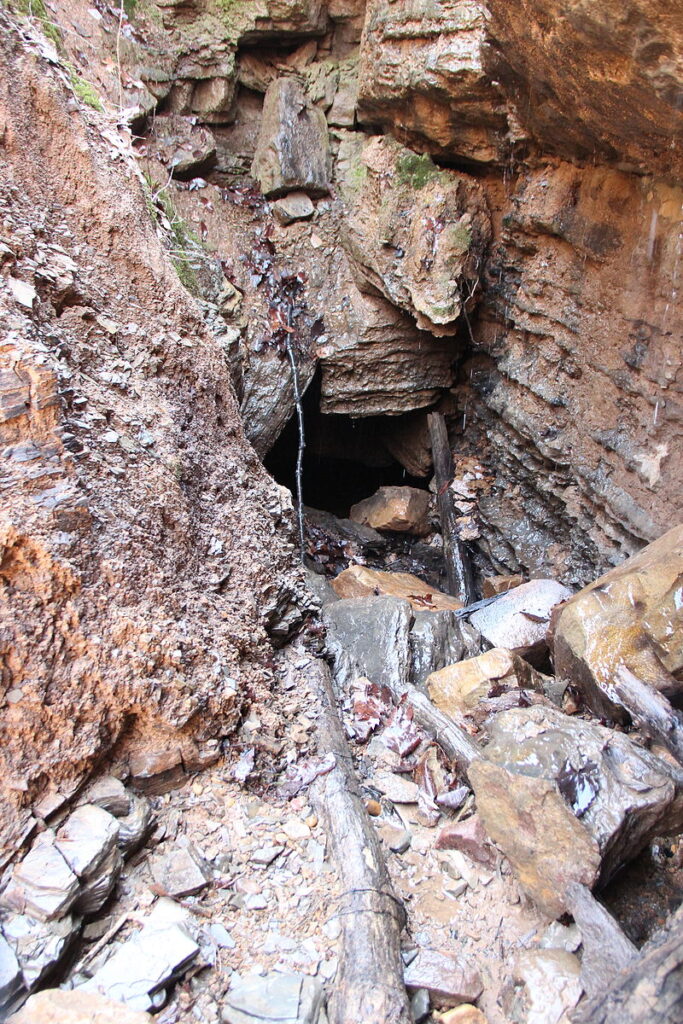Ellison’s Cave is located is Northwest Georgia, in the Crockford-Pigeon Mountain Wildlife Management Area in Walker County. With a total length of 64,030 feet, Ellison’s Cave is almost twelve miles long and measures 1,063 feet deep—one of the largest caves in the United States. It contains the two deepest cave drops in the country, named “Fantastic” and “Incredible,” and measuring up to 586 and 440 feet deep, respectively.
It was formed from the dissolution of limestone bedrock by acidic groundwater, which in northwest Georgia dates to the Paleozoic Age. An exploration of the cave in 1968 led to a unique geological discovery: there is a semi-active fault along the floor of the cave, that can be visible from the bottom of the cave’s massive pits. The orientation of grooves in the cave’s walls give it away to be a lateral fault, one that moves horizontally. Piles of debris and pulverized rock accumulate on the floor of the cave from the grinding of fault planes. Although the fault is surprisingly active for this area of the country, most have its movements have been small enough to not yet pose any risk to the structure of the cave. Because of its impressive drops, Ellison’s cave today is frequently visited for hiking and by cavers, who flock to the region where Georgia, Alabama, and Tennessee meet for some of the world’s best caving.
Sources:
Elkins, J. T. and L. B. Railsback. (23 Jul. 2018.) Caves. New Georgia Encyclopedia. Web. Retrieved 15 November 2021 from https://www.georgiaencyclopedia.org/articles/geography-environment/caves/
Palmer, A. (Dec. 2009). Cave Exploration as a Guide to Geologic Research in the Appalachians. Society Bulletin, 71(3): 180-192. DOI:10.4311/jcks2008es0042




